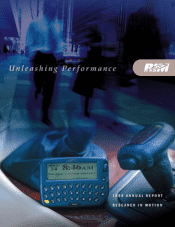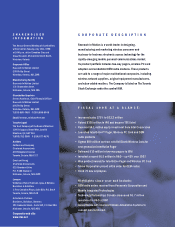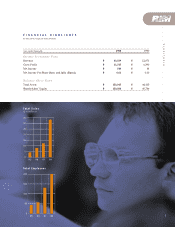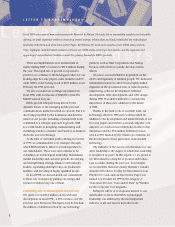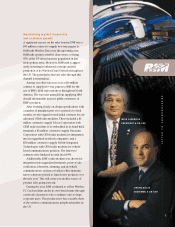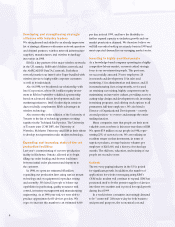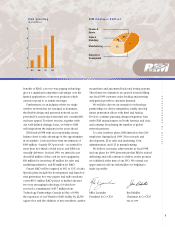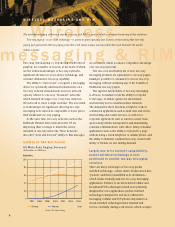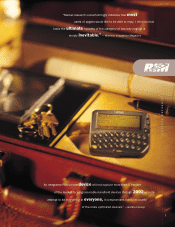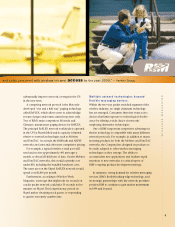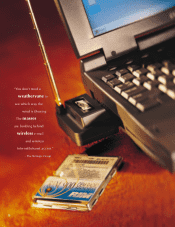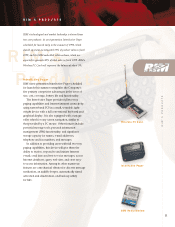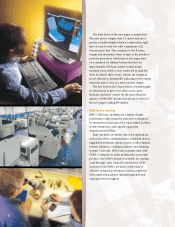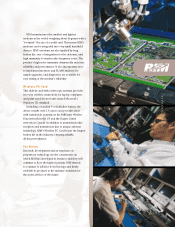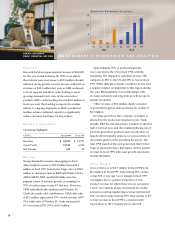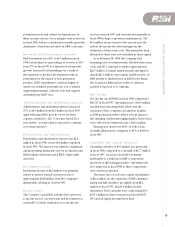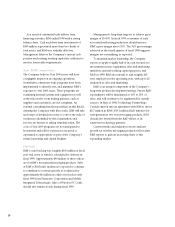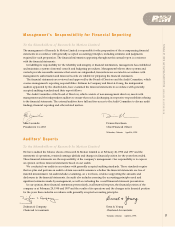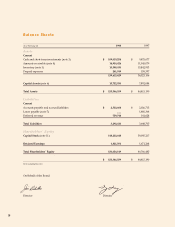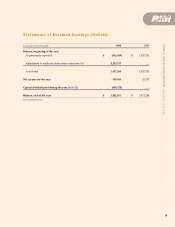Blackberry 1998 Annual Report Download - page 11
Download and view the complete annual report
Please find page 11 of the 1998 Blackberry annual report below. You can navigate through the pages in the report by either clicking on the pages listed below, or by using the keyword search tool below to find specific information within the annual report.
substantially improve network coverage in the US
in the near term.
A competing network protocol is the Motorola-
developed “one and a half way” paging technology
called ReFLEX, which allows users to acknowledge
receipt of pages and return canned responses only.
Two of RIM’s main competitors, Motorola and
Glenayre, manufacture paging devices for ReFLEX.
The principal ReFLEX network worldwide is operated
in the US by Skytel (Mtel) and its capacity is limited
relative to network technologies such as Mobitex
and DataTAC. As a result, the BellSouth and ARDIS
networks are faster and offer more competitive pricing.
For example, a typical wireless e-mail user will
send and receive approximately 400 messages a
month, or about 200 kilobytes of data. On the Mobitex
and DataTAC networks, this would currently cost
under $50, including the bundled hardware costs.
The same user on the Skytel ReFLEX network would
spend over $1,800 per month.
Furthermore, according to Wireless Week
Magazine, a message that might take six seconds on
a radio packet network could take 30 seconds to five
minutes on Skytel. This longer latency period on
Skytel makes obtaining stock quotes or responding
to queries extremely cumbersome.
Multiple network technologies demand
flexible messaging devices.
Within the two-way packet switched segment of the
wireless industry, no single dominant technology
has yet emerged. Consumers therefore want access
devices that limit exposure to technological obsoles-
cence by offering a wide choice of networks
employing alternative technologies.
One of RIM’s important competitive advantages is
that its technology is compatible with many different
network protocols. For example, in addition to manu-
facturing products for both the Mobitex and DataTAC
networks, the Company has designed its products to
be easily adapted to other wireless messaging
technologies as they emerge. The ability to
accommodate new applications and facilitate rapid
transition to new networks is a critical aspect of
RIM’s ongoing product development strategy.
In summary, strong demand for wireless messaging
services, RIM’s flexible leading-edge technology, and
its strategic partnerships with key network providers
position RIM to continue to gain market momentum
in 1999 and beyond.
WIRELESS MESSAGING
9
and sales personnel with wireless intranet access by the year 2000.” — Yankee Group

